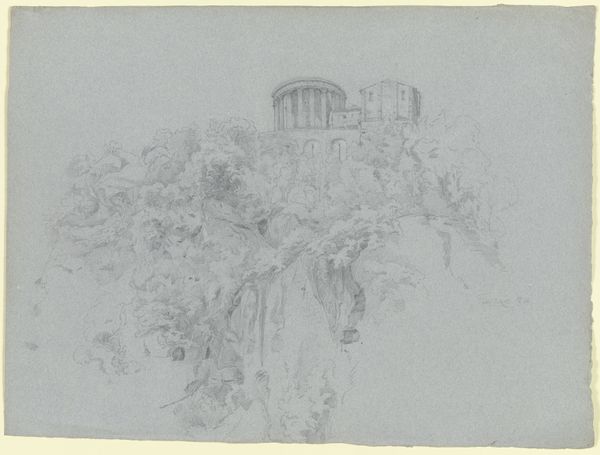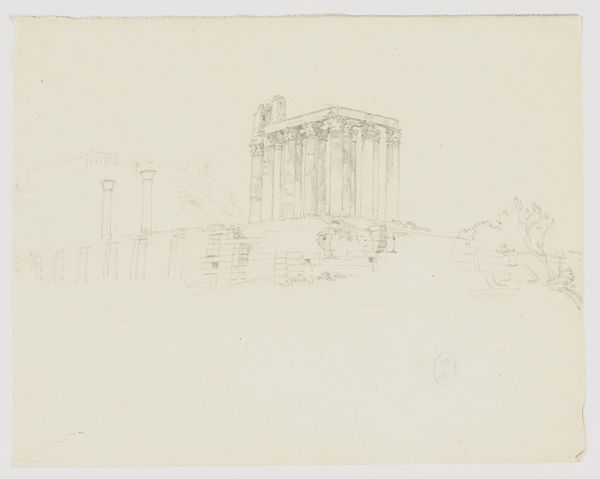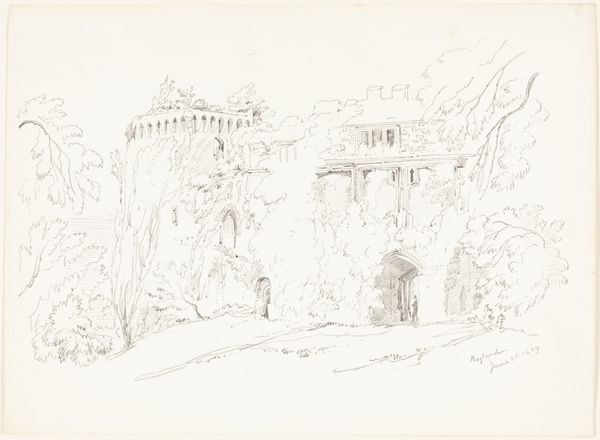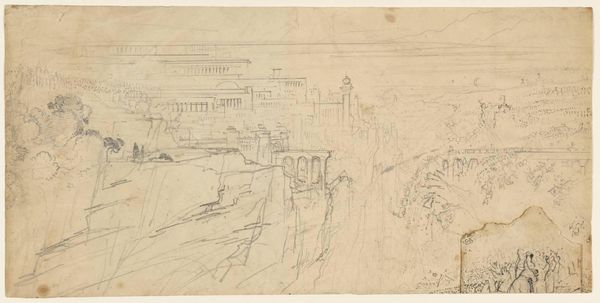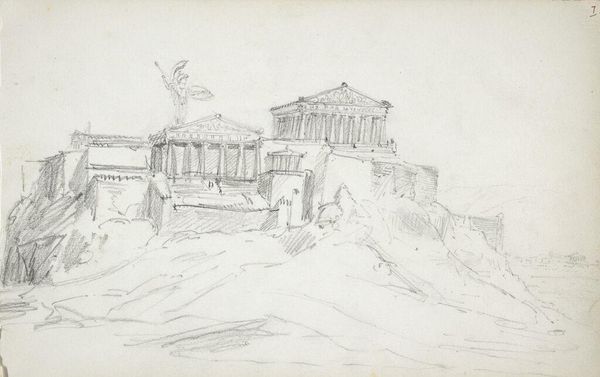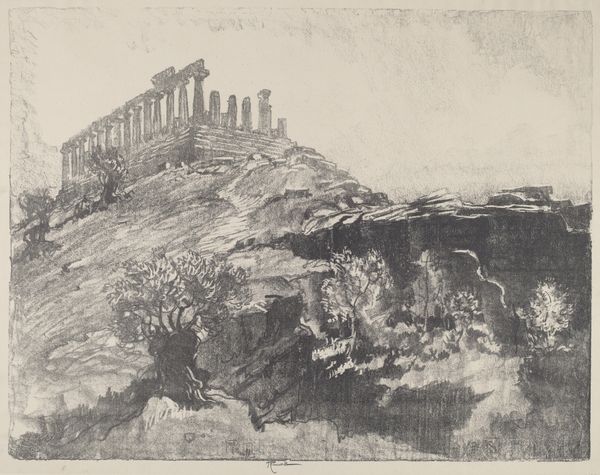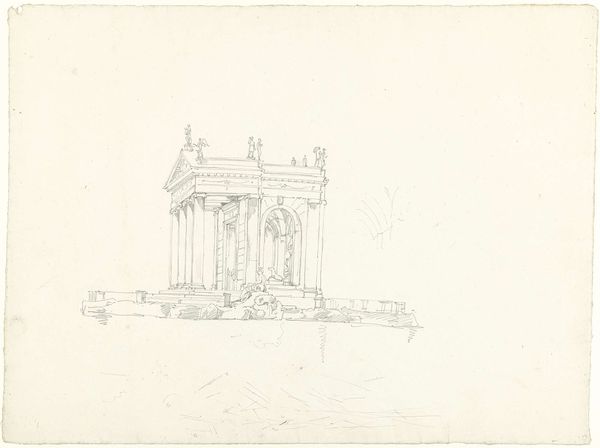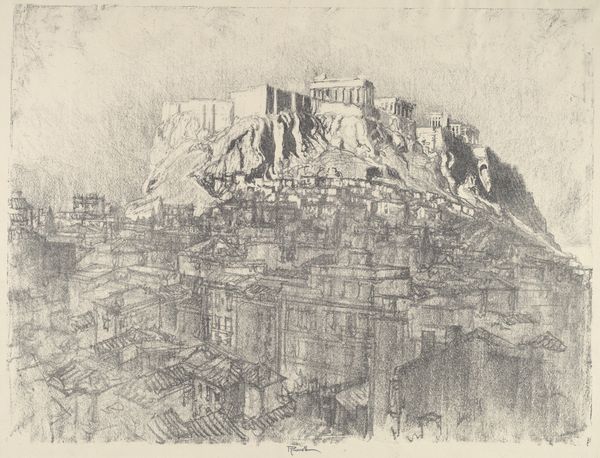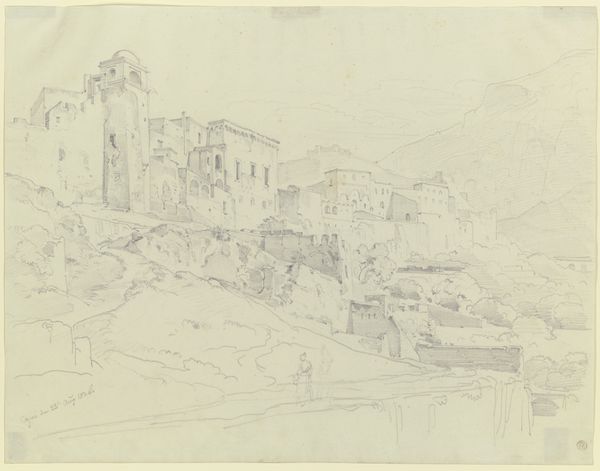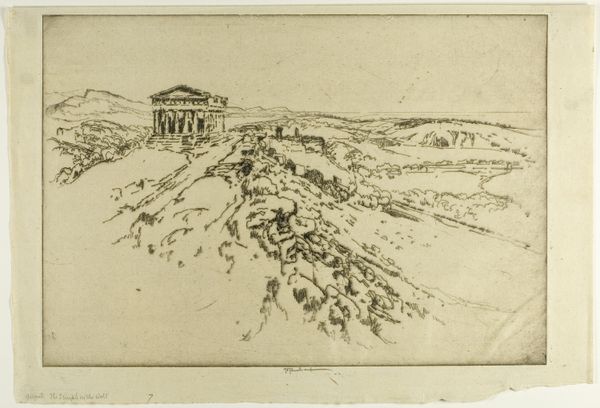
drawing, paper, pencil, architecture
#
drawing
#
16_19th-century
#
landscape
#
classical-realism
#
paper
#
pencil
#
architecture
Copyright: Public Domain
Curator: Let's talk about Carl Morgenstern’s "Der Tempel der Vesta und S. Giorgio in Tivoli," created between 1830 and 1835. What strikes you first about it? Editor: Well, it’s a pencil drawing on paper, and there’s a very ethereal feel to it. It's almost like looking at a dream. How should we interpret its classical-realist style and its landscape depiction? Curator: Notice how the architectural elements—the Temple of Vesta and the church—are rendered. Consider the materials, paper and graphite, seemingly simple. But pencil, particularly in the 19th century, represented accessibility. What did it mean to choose such a readily available material to depict something as monumental as classical architecture? Editor: You’re saying it democratized the image, made it reproducible and more available. How does the *act* of drawing fit into the materiality of this artwork? Curator: Exactly! Think about the labour involved. This isn’t about rare pigments or expensive canvas, but about time, skill, and direct observation. Each stroke is a record of Morgenstern’s engagement with the site. Consider that in the context of the emerging culture of tourism. People wanted affordable, portable records of their travels. Could this drawing be seen as a souvenir, a commodity produced for a growing market? Editor: That’s a fascinating perspective. So it's not just about the *what* of the image – the buildings themselves – but the *how* and *why* it was created. Curator: Precisely. We must understand the production and the materials themselves in relation to the burgeoning 19th-century art market and society. It alters how we consider his artmaking, right? Editor: It certainly does! I’ll definitely look at materials differently from now on! Curator: I hope this lens inspires you in our subsequent artwork dialogues.
Comments
No comments
Be the first to comment and join the conversation on the ultimate creative platform.
